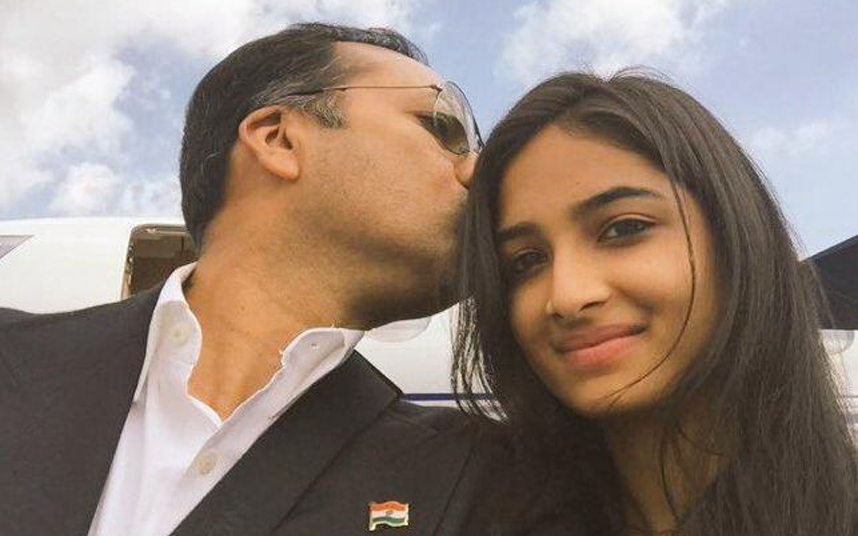By Abhishek Saha
Hindustan Times, New Delhi.
Social media platforms were flooded with father-daughter selfies thanks to a message from Prime Minister Narendra Modi during his monthly radio address on Sunday.
“In Haryana, a village Sarpanch initiated a #SelfieWithDaughter initiative. I urge all of you, share a #SelfieWithDaughter. Also share a tagline that will encourage ‘Beti Bachao, Beti Padhao’,” Modi.
The NDA government launched the ‘Beti Bachao, Beti Padhao’ campaign in January this year in an effort to tackle the declining ratio of girls to boys aged below 6 years.
There has been a decline in the Child Sex Ratio (CSR), defined as number of girls per 1,000 of boys between 0-6 years of age, since 1961. The ‘Beti Bachao, Beti Padhao’ campaign was launched to prevent gender biased sex selective elimination, to ensure survival and protection of the girl child and ensure her education.
The cheerful selfies posted on Twitter with captions like “Meri beti….pyari beti….” and “Daddy-daughters picture time ..!!”, however, hardly had any mention of such a grim reality.
#selfiewithdaughter @narendramodi Meri beti …. pyari beti…. pic.twitter.com/kboRDfpCsS
— Amit Singh (@Amit0710Singh) June 28, 2015
As journalist Sruthijith, editor of Huffington Post India, said in a tweet, “The trouble with movements like a selfie contest is it creates a mirage of buy-in without requiring any real commitment or inspiring change.”
Data and indicators released by various international monitoring bodies say that in several fields — including health, education, economic and political — women in India suffer widespread inequality.
In the United Nations Human Development Report of 2014, India secured a rank of 127 out of 152 countries in the Gender Inequality Index (GII). Ironically, it shares the rank with Pakistan, and is behind China (37), Russia (52), Sri Lanka (75), Brazil (85), South Africa (94), Nepal (98), Bhutan (102) and Bangladesh (115).
According to the World Economic Forum’s latest report, India’s rank on the Gender Gap Index (GGI) of 2014 is 114 (out of 142 countries). Its score is 0.646, where 0 represents inequality and 1, equality. Here, too, the country is behind Bangladesh (68), Brazil (71), Russia (75), Sri Lanka (79), China (87), and Nepal (112).
Apart from the above indexes, data accumulated by the World Bank suggests India’s maternal mortality ratio (calculated per 100,000 live births) of 190, is higher than that in many comparable countries.
In India, the proportion of seats held by women in the Parliament is 11%. The percentage of seats held by women in other countries shows that it’s quite low a proportion.
As far as gender equality is concerned, India’s fabric is punctured with discrimination against girls and women whether it’s through female foeticide and infanticide or societal prejudices and discriminations later on in life.
To highlight this, perhaps, the satirical Twitter handle, @KhapPanchayat, tweeted a picture of an X-ray image of a baby in the uterus and used the hashtag #selfiewithdaughter.
A patriarchal society with a characteristic preference for the male child is often pointed to as one of the root causes for gender inequality in India, which often manifests itself through a skewed sex ratio.
Today, for every 1,000 males in the country, there are only 942 females. It implies that for every 1,000 males, 58 women are “missing”.
In a critically acclaimed essay published in the New York Review of Books in 1990, Nobel laureate Amartya Sen had argued that “more than 100 million women” were “missing” from the world at that point of time, narrating a “terrible story of inequality and neglect leading to the excess mortality of women”.
“A great many more than a hundred million women are simply not there because women are neglected compared with men,” wrote the economist, highlighting how determining the reasons behind gender inequality is quite complicated and multi-dimensional.
buy aurogra generic buy aurogra online no prescription
In the thought-provoking essay, Sen reached his conclusion by calculating the number of “extra” women who would have been present in a country such as China or India if these countries had the same ratio of women to men as obtained in countries where men and women receive similar care.
If we consider that the number of males should be equal to number of females and compare the difference in population in India today, more than 37 million women are “missing” in the country.
But if we consider that in an ideal case, the number of women must be more than men in the population, then the deficit will be higher.














































































































































































































































































































































































